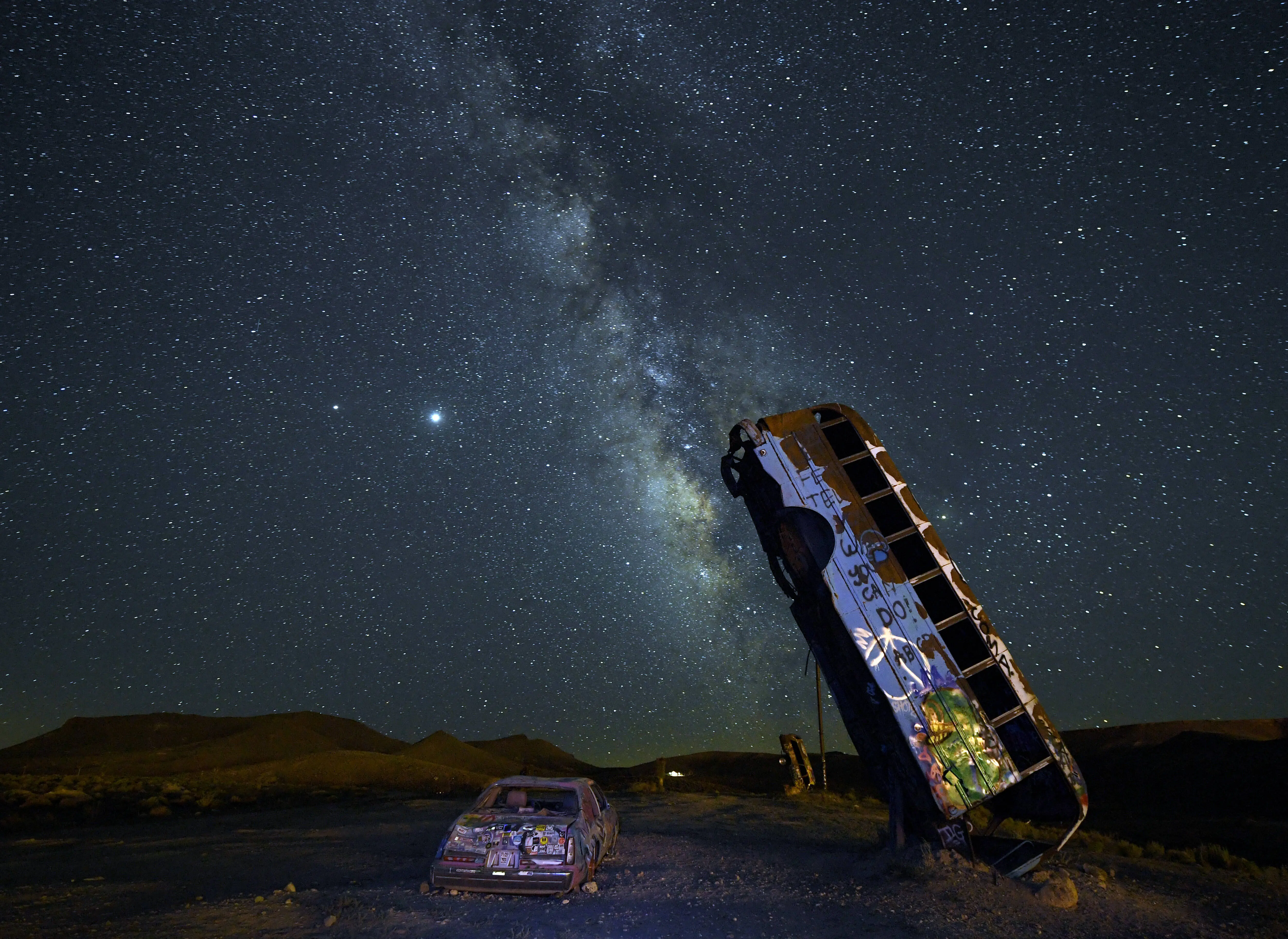New images of interstellar object 3I/Atlas reveal it has no visible tail, scientists clarify after early confusion
-
 GOLDFIELD, NEVADA - JULY 18: The Milky Way galaxy is seen from the International Car Forest of the Last Church on July 19, 2020 in Goldfield, Nevada. The Car Forest is an outdoor art installation of junk vehicles planted in the ground vertically. (Photo by Ethan Miller/Getty Images)
GOLDFIELD, NEVADA - JULY 18: The Milky Way galaxy is seen from the International Car Forest of the Last Church on July 19, 2020 in Goldfield, Nevada. The Car Forest is an outdoor art installation of junk vehicles planted in the ground vertically. (Photo by Ethan Miller/Getty Images)A new interesting update has entered the talks, which says that 3I/ATLAS does not have a comet tail, as reported by The Economic Times. This interstellar comet is fascinating scientists day by day with its unusual characteristics, and now this new interesting fact that 3I/ATLAS doesn't have a tail is something beyond our understanding.
Scientists are still trying to figure out its chemical composition and its origin. Many predictions are being made about what its next move might be. Recently, new images have been released, creating a lot of confusion about this mysterious new visitor that has entered our solar system.
On October 30, 2025, when 3I/ATLAS came closest to the Sun (its perihelion), it glowed with a bright blue light. Scientists said this happened because the Sun’s heat was melting its ice, causing it to shine brightly. However, as Harvard scientist Avi Loeb mentioned in his recent article, if an object loses more than 13% of its mass, it should usually form a big tail made of gas and dust, like a normal comet. But the new images of 3I/ATLAS show no visible tail, suggesting there may be a new discovery for scientists to uncover soon.
3I/ATLAS’ new images show no signs of a visible comet tail
When 3I/ATLAS was at its perihelion, it was releasing gas and dust, and the Sun’s heat made it appear bluer in color and became brighter by a factor of five. Scientists believed that it would soon develop a tail like a normal comet. However, the latest images released show it only as a small blue spot, without any large or noticeable tail.
New images from November 5, 2025, show no visible comet tail, only a small bright spot of light. This is strange because NASA’s data shows non-gravitational acceleration, meaning something (like gas or vapor) was supposedly pushing it.
So, even though 3I/ATLAS seems to be losing mass and moving like an active comet, it doesn’t look like one. That’s why scientists find it mysterious; its behavior doesn’t match its appearance.
Harvard professor Avi Loeb joined a discussion on NBC News and gave his scientific reasons for the same. He said,
“That’s very surprising. There should have been a very massive cloud of gas and dust around it based on what we know about comets. In fact, we see other comets in the solar system that have a beautiful tail away from the sun behind them, and Lemmon is an excellent example. But in our case of 3I/ATLAS, it looks like a fuzzy ball of light, even after it passed through perihelion. It was heated by 770 watts per square meter.”
Scientists say that earlier, 3I/ATLAS released gas that was mostly made of carbon dioxide. Since carbon dioxide ice turns into gas at a much lower temperature than water ice, the object should have broken apart or at least formed a thick cloud of gas and dust pushed away from the Sun by solar radiation or wind. But that hasn’t happened, which is confusing.
One possible explanation by Professor Loeb is that small pieces of ice are evaporating quickly when exposed to sunlight, disappearing before they can form a visible tail or glow behind the object. However, scientists are still unsure and are trying to understand what exactly is going on.
“There are things we don’t know fully understand about this object, and that’s what makes it exciting, and all of us will wait for the data that will come in the coming weeks,” Loeb said on NBC News.
Avi Loeb believes that studying 3I/ATLAS is like going on a "blind date," where we don’t yet know whether it’s a natural or an artificial object. If it turns out to be natural, then finding out where it came from will be very important. Scientists will get a better chance to study it on December 19, when 3I/ATLAS will be at its closest point to Earth.
TOPICS: 3I/ATLAS
- YouTube removes AI-generated 3I/ATLAS videos impersonating Harvard Professor Avi Loeb
- New analysis presents unusual features documented in the 3I/ATLAS trajectory and activity
- Periodic light variability in interstellar object 3I/ATLAS linked to jet activity
- What we know so far about 3I/ATLAS: Everything understood to date